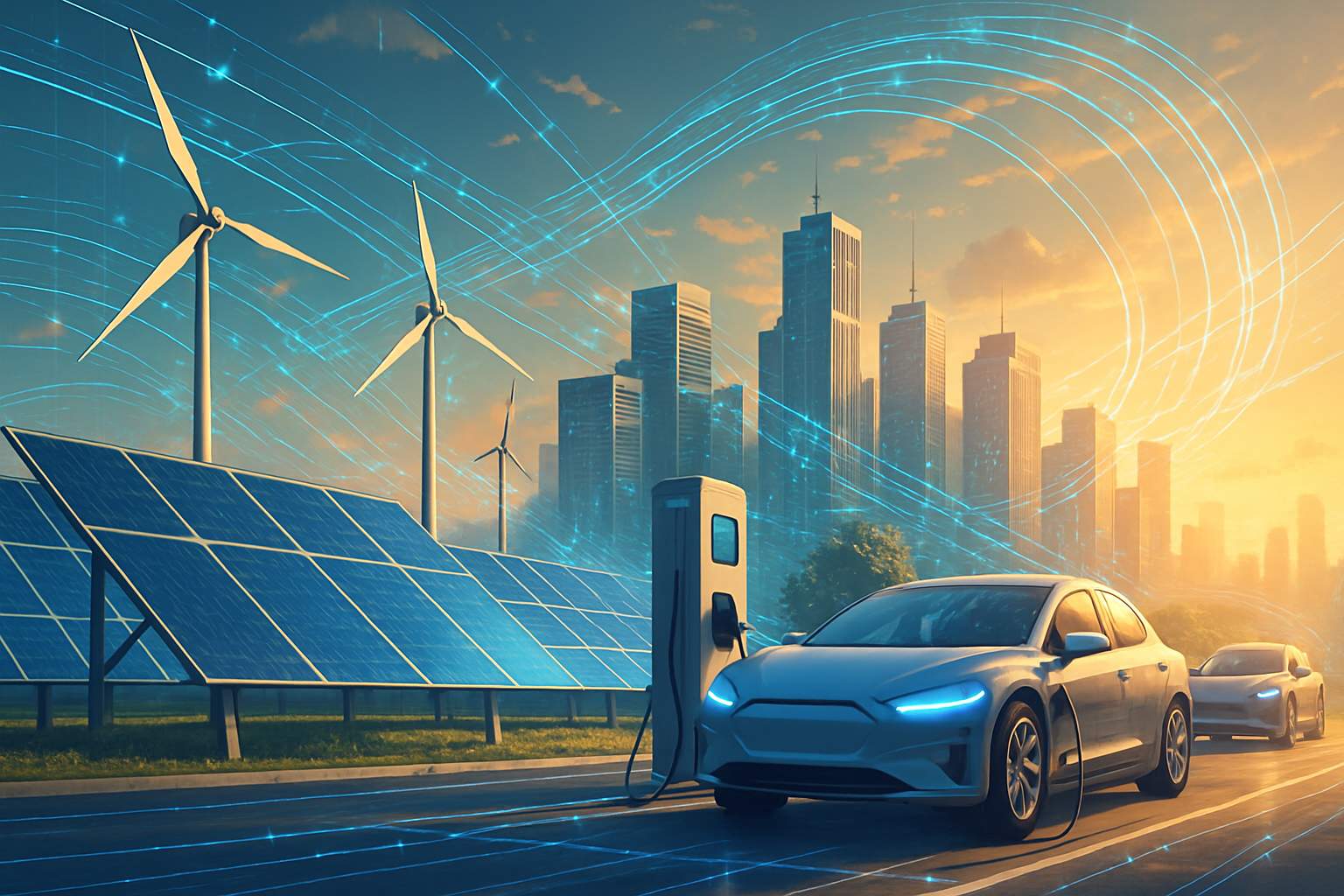
AI CERTS
23 hours ago
MIT AI Innovations Fast-Track Clean Tech Adoption
This article unpacks the science, hardware, and policy behind those headlines. Additionally, it explains why the work matters for investors, utilities, and researchers. Expect concise data, expert quotes, and actionable insights arranged for busy technical readers. By the end, you will grasp how artificial intelligence supports the broader energy Transition. You will also see where strategic skills and certifications fit into the picture. Therefore, prepare for a guided tour through MIT's most consequential energy innovations.
AI Labs Redefine Discovery
AI-driven “self-driving” laboratories now run exhaustive catalyst searches with minimal human input. CRESt, a multimodal platform, explored more than 900 chemistries. It executed 3,500 electrochemical tests in just three months. Moreover, the system produced a catalyst delivering 9.3-fold cost-specific power improvement over palladium.

Such speed compresses years of manual iteration into one quarter, slashing time-to-market for Clean Tech Materials. Ju Li notes that AI reads more papers than any scientist, enabling broader hypothesis generation. Consequently, research pipelines become interdisciplinary by default, a feature critical for complex energy chemistries.
Notable Energy Data Points
- 900+ chemistries and 3,500 tests completed in 90 days.
- 9.3× cost-specific power boost versus palladium benchmark.
- Autonomous probe mapped 125 photoconductance points hourly, accelerating Materials validation.
- IEA projects data-center electricity hitting 945 TWh globally by 2030.
- DOE scenarios place U.S. data-center share at up to 12% by 2028.
- MIT positions these advances as pillars of future Clean Tech innovation.
These numbers illustrate the disruptive pace of AI-guided discovery. However, scaling lab triumphs requires parallel advances in manufacturing and regulation. Consequently, attention is shifting from molecules to megawatts, specifically the AI-enabled Power Grid.
AI Strengthens Power Grid
Grid planners face rising volatility from renewables and soaring data-center loads. Therefore, MIT teams build reinforcement-learning controllers that forecast generation and adjust assets in milliseconds.
Anuradha Annaswamy describes the challenge clearly: information infrastructure must complement physical wires. DecarbAI prototypes generate optimized capacity expansion plans within hours, not weeks.
Moreover, Priya Donti’s methods solve power-flow equations faster by embedding physics into neural networks. This acceleration frees operators to evaluate more contingencies and lower reliability risks.
Collectively, these tools promise a smarter, adaptive Power Grid that integrates variable renewables smoothly. They also provide critical decision support for Clean Tech deployment across diverse regions.
MIT’s grid algorithms improve resilience and planning accuracy. Nevertheless, hardware efficiency remains essential to keep operational emissions in check. Next, we examine advances shrinking AI’s own electrical appetite.
Hardware Cuts Energy Use
Running large models demands vast electricity today. Consequently, MIT researchers pursue photonic processors that execute neural arithmetic with light, not electrons.
Early prototypes already achieve high multiply-accumulate throughput with drastically lower joules per operation. In contrast, Vertical Semiconductor scales gallium-nitride power devices that minimize conversion losses inside data centers.
These components could reduce facility demand, easing stress on every regional Power Grid. Moreover, lower waste heat simplifies cooling, further curbing environmental footprints.
Hardware innovation therefore complements algorithmic efficiency, forming a holistic Clean Tech strategy. Optical cores and GaN switches target the supply side of AI energy consumption. However, unchecked demand growth still threatens decarbonization timelines. The following section addresses that tension directly.
Balancing Demand Growth Risks
IEA warns global data-center use may exceed 945 TWh by 2030. Meanwhile, DOE and EPRI project up to 12% of U.S. electricity could feed servers by 2028.
Such growth, if met with fossil generation, could offset gains from renewable Transition efforts. Therefore, MIT scholars frame AI as both opportunity and cautionary tale.
William Green emphasizes proactive planning, including location decisions, renewable procurement, and flexible demand programs. In contrast, critics highlight local water stress and equity concerns around hyperscale campuses.
Lifecycle assessments also uncover embodied emissions from chip fabrication and construction Materials. Consequently, holistic carbon accounting becomes non-negotiable for credible Clean Tech claims.
Demand projections reveal serious headwinds for sustainable computing. Yet policy and market levers can redirect trajectories toward climate alignment. The next section explores those levers.
Policy And Market Pathways
Governments can expedite renewable interconnection queues and enhance Transmission planning transparency. Furthermore, regulators may condition data-center permits on aggressive Transition milestones and onsite storage.
Utilities, in turn, can negotiate dynamic tariffs that incentivize workload shifting during surplus renewable periods. Moreover, long-term clean-power purchase agreements provide demand certainty for developers.
Corporate buyers already chase 24/7 carbon-free energy, yet contract structures remain immature. Consequently, collaborative forums like MITEI’s Data Center Power Forum seed standardized templates.
Robust metrics, such as avoided carbon per inference, will guide capital toward impactful Clean Tech investments. Effective policy blends standards, incentives, and transparent data sharing. With governance outlined, individual capability building becomes the final imperative. Subsequently, we discuss workforce skills.
Skills For Future Leaders
Rapid technical change widens the knowledge gap across engineering and policy teams. Therefore, continuous education is essential for steering the energy Transition responsibly.
Professionals can boost expertise through the AI for Everyone™ certification.
This credential demystifies machine-learning fundamentals, grid applications, and Clean Tech case studies. Moreover, it suits engineers, analysts, and regulatory staff seeking cross-disciplinary fluency.
Skill investments complement institutional strategies, ensuring Materials breakthroughs and grid algorithms translate into market value. Human capital ultimately determines how fast discoveries become deployable solutions. Consequently, training accelerates impact just like automation accelerates experiments. The final section recaps key insights and next actions.
MIT research demonstrates an intertwined future where algorithms, robots, and hardware drive energy progress. However, scaling success demands careful management of rising electricity demand and supply constraints. Adaptive grid software, efficient chips, and rigorous lifecycle analysis together keep Clean Tech momentum credible. Meanwhile, policy frameworks and workforce development ensure equitable, resilient implementation. Therefore, stakeholders should track MIT projects, adopt transparent metrics, and pursue continuous learning. Start by evaluating the referenced certification and benchmarking your organization’s readiness today. Consequently, decisive collaboration will turn experimental promise into mainstream Clean Tech deployment.



